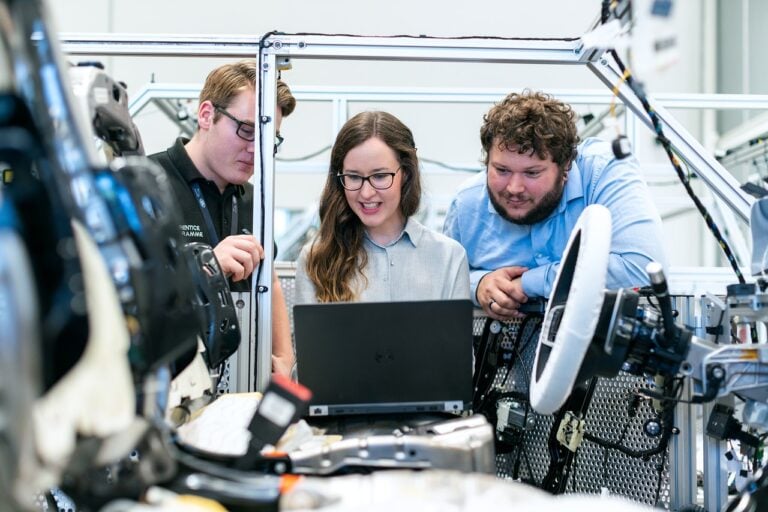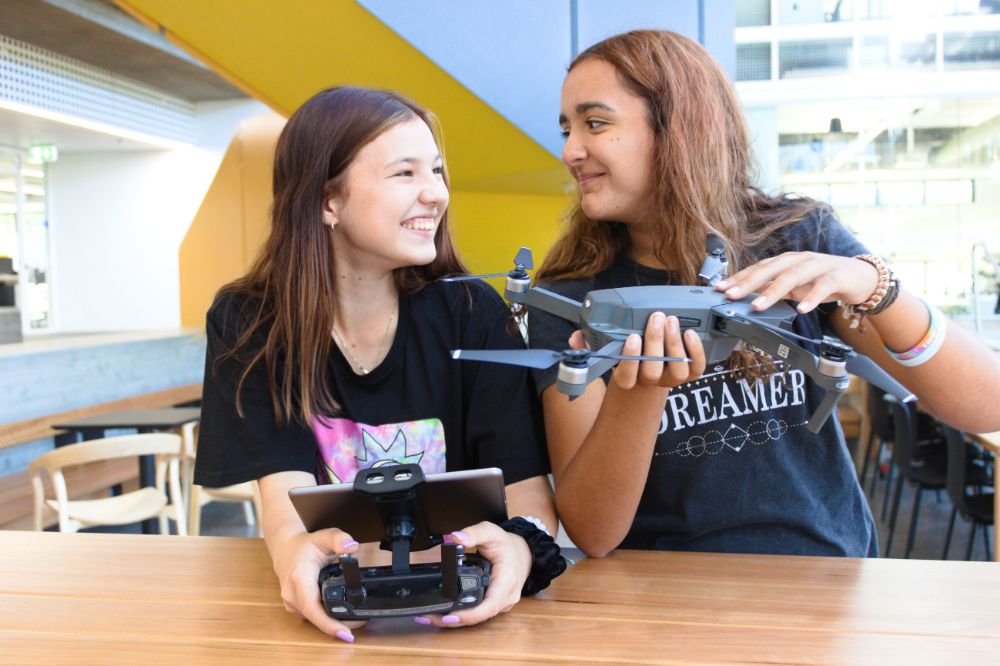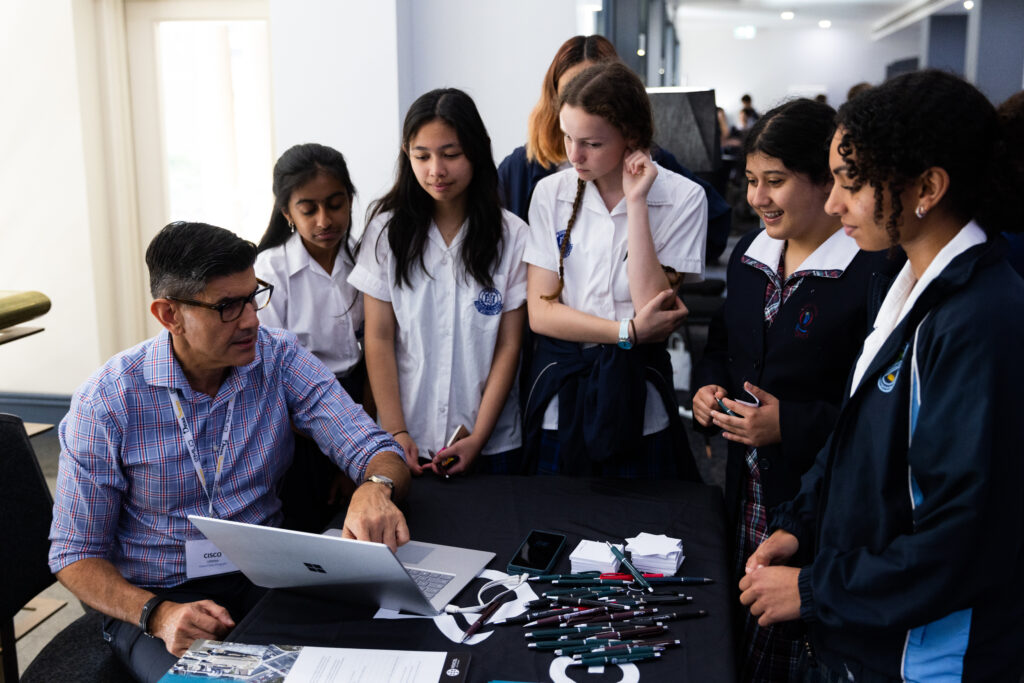Main Menu


Did you know that students as young as 10 years old are expressing interest in the occupation they aspire to in the future? While it is fantastic to see so many bright, young students looking towards their future, there is a catch. The problem is that most 10 year old students have a very limited view of the types of careers that are available to them. This is especially true when it comes to future STEM careers. Because we know that young students are interested in and thinking about their future careers, we need to make sure that we are introducing students to a wide range of STEM career possibilities early on in their school life. The Optimising STEM Industry-School Partnerships: Inspiring Australia’s Next Generation report tells us that providing exposure to a variety of STEM career options in primary school can broaden our student’s perspectives and help them make more informed decisions as they progress through their high school education. It also highlights that the best way for schools to do this effectively is to work with industry.
Teachers are central. Classroom teachers are in the unique position of being able to link what students are learning in the classroom to different career pathways. This can be particularly helpful for teachers who are trying to make some of the more abstract learning topics more applicable to their students. For example, when students say that they will ‘never need to use SOHCAHTOA ever in their lives’, teachers can respond with a list of exciting (and well paying) careers where this knowledge will be useful. Careers such as game designers, surveyors, flight engineers and architects all require the use of this helpful mnemonic. Teachers can also highlight the less obvious but incredibly important skills that students are developing in each lesson such as collaboration, critical thinking and problem solving and how these skills are relevant to a range of STEM careers.
Providing students with a clear understanding of the real-world problems that STEM-related careers can address is crucial for fostering their interest and motivation to pursue STEM studies and ultimately STEM careers. When students are aware of the practical applications and positive impact that STEM fields can have on society, they are more likely to make subject choices that align with their future goals. But for teachers to be able to do this effectively, they first need to have access to current and correct STEM career information so that they can connect what they are teaching to real world uses. This is where industry comes in. When schools and industry work together, they play a vital role in preparing the future workforce. By actively engaging with industry professionals, students gain insights into the current job market, industry trends, and emerging technologies. This knowledge helps students make informed decisions about their career paths and better understand the skills that will be in demand in the future.
Collaboration between schools and STEM industries ensures that education remains relevant and aligned with the needs of the job market. By working together, schools can gain insights into the current and future requirements of the STEM industry and adjust their programs accordingly. This provides students with opportunities to study subjects that will directly benefit them and provide them with relevant credentials to enter their chosen pathway after graduation. Through school-industry partnerships we are starting to see more high schools offer their senior students industry relevant study options such as certificates in aviation, where students can prepare themselves to enter the aviation industry by learning from industry professionals and earning their remote pilot licence (RePL) and aeronautical radio operators certificate (AROC). With this experience and qualification, students are much better prepared to enter the aviation industry and these skills can also be utilised in other STEM careers such as surveying, geospatial science and environmental science.

There is often a disconnect between the skills students learn in school and the skills employers seek. Through collaboration, schools and industry can identify these gaps and work together to bridge them. Industry professionals can provide valuable input on the specific skills, knowledge, and competencies required in the workforce. This partnership helps create a more seamless transition from education to employment and reduces the existing skills shortage. We know that there are some fundamental skills that employers across a range of STEM industries are looking for. Skills such as being able to effectively convey information, both written and verbal, collaboration skills, the ability to think creatively and come up with innovative solutions to challenges and being able to adjust to new technologies, industries, and work environments. When teachers recognise that these skills are in high demand in the STEM industry, they can look for ways to teach these skills more consistently.
Schools and industry can work together by facilitating guest lectures, workshops, and networking events. This will ensure students are better placed to engage in work-based learning opportunities such as internships, apprenticeships, and on-the-job training. These experiences give students a chance to apply their classroom learning in real-world settings, gain practical skills, and develop a deeper understanding of their chosen field. This is valuable to students as they benefit from hands-on experiences, mentorship, and networking opportunities, all of which will increase their chances of employment after graduation. It is also valuable to industry employers as they are able to train up the next generation of professionals and ensure that they will be ready to step into industry jobs.

Given that teachers often work outside their main disciplines, STEM professionals can offer guidance on interdisciplinary approaches. This can help educators connect concepts across subjects and create more holistic learning experiences for their students. Industry partners can contribute practical examples, case studies, and authentic scenarios that reflect the challenges and opportunities STEM professionals face in the real world. Such content can make the learning experience more engaging and relatable, and help teachers bridge the gap between theory and practice. STEM businesses and professionals in Australia are often very generous with their time and have access to a wealth of resources, including research findings, data, tools, and technologies. These resources can enrich classroom learning materials, providing teachers with valuable information and tools they can incorporate into their teaching strategies.
Take a look at how She Maps and ForestLearning partnered to create a free unit of work that allows students in years 5-6 and 9-10 to explore how Australia’s forests are sustainably managed using a variety of high-tech digital systems including drone and remote sensing technologies.
Despite there being a willingness from both schools and the STEM industry to work together and support students into STEM careers, there is one barrier that can sometimes get in the way of this. The culture and pace of the education sector differs significantly from that of the STEM industry. This can lead to misalignment as well as difficulties in communication and collaboration between the two parties. This is where She Maps can help. She Maps is on a mission to bridge the gap between STEM industries and schools by providing educators with industry-relevant knowledge, resources, and tools that help students see the practical applications of STEM in the real world. She Maps collaborate with a range of industry partners and experts in geospatial technology to ensure that their educational programs and resources are up-to-date and aligned with industry trends and the Australian Curriculum. This partnership brings industry professionals into the educational process, providing students with insights and perspectives from the field.
It is clear that the collaboration between schools and STEM industries is mutually beneficial. It ensures that education remains relevant, addresses the skills gap, provides work-based learning opportunities, prepares the future workforce, and facilitates networking and employment prospects. By working together, schools and industry can create a collaborative relationship that promotes the success and prosperity of students, educators, and the economy as a whole.
She Maps is Australia’s leading expert in drone and geospatial education.
She Maps assist schools with the purchasing of drones, school-industry created drone and geospatial teaching resources and highly supportive teacher professional development.
Ready to buy drones for your school? We are an authorised DJI reseller in Australia

Subscribe by email and never miss a blog post or announcement.

She Maps aims to bring much needed diversity and support to STEM. We do this by providing drone and geospatial programs to teachers and schools across the globe.
At She Maps we acknowledge the Traditional Custodians of Country throughout Australia and their connections to land, sea, and community. We pay our respect to their Elders past and present and extend that respect to all Aboriginal and Torres Strait Islander peoples today.
Aboriginal and Torres Strait Islander peoples are advised that this site may contain names, voices, or images of people who have passed away.
Take our resources for a spin and join the thousands of teachers who love our ready-to-teach classroom materials. Try one of our complete units of work for free.

